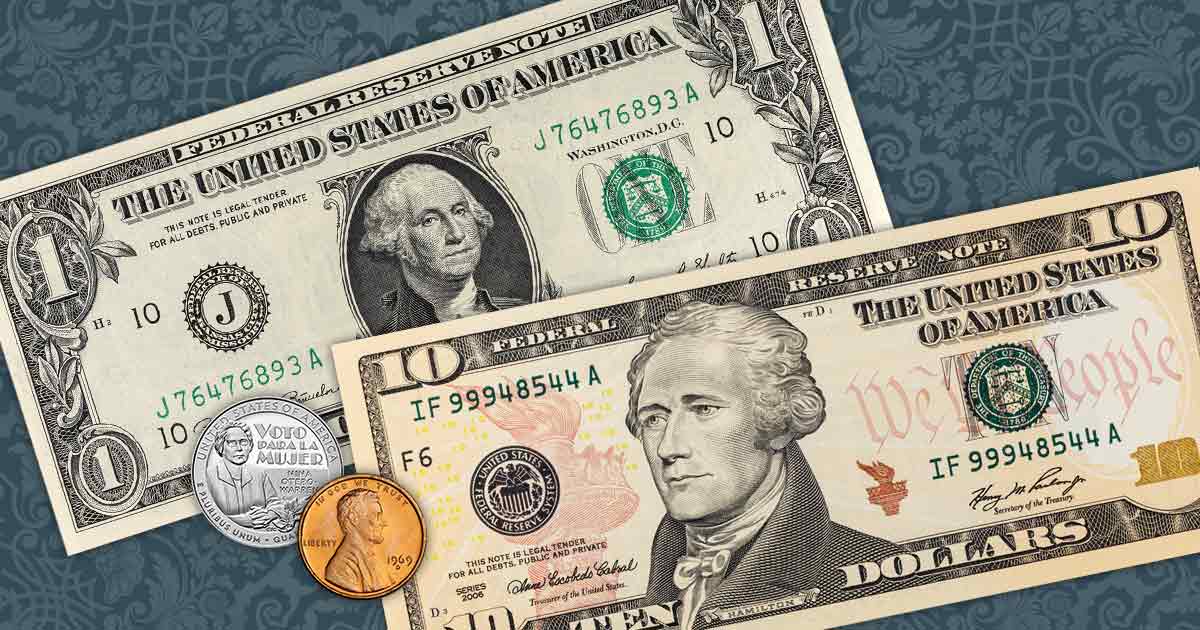
Legal tender is a term we use to describe forms of money that are recognized as a means to settle debts both public and private. This includes money used to meet financial obligations like fines, tax payments, and damages. Depending on where you are, the national currency is a legal tender in most nations and can be used for the payment of debts.
Legal tender includes paper currency and circulating and proof varieties of coins, as well as bullion like the Silver American Eagle, the Gold Eagle, and the Gold Buffalo.
What is the Difference Between Legal Tender and Money?
Legal tender is a type of money that must be accepted by creditors to settle debts and obligations, while money more broadly refers to a medium of exchange used to pay for services and goods.
Examples of money that are not legal tender include foreign currency, promissory notes, and digital currency. Cryptocurrencies like Bitcoin are used to facilitate trade and commerce but are not issued by a sovereign government. Likewise, personal checks, credit cards, and other non-cash items may be used to purchase goods and services but are not examples of legal tender.
While many businesses accept these forms of payment, they are not required to.
In fact, there is no federal law or statute that requires private businesses to accept paper currency or coins as payment for their goods and services. And while private businesses are free to establish their own rates and methods of pay, local and state governments can still enact laws and pass legislation that require businesses to accept U.S. coins and paper currency.
What About Legal Tender That is Not Money?
Almost half of the United States have passed legislation that recognizes silver and gold as legal tender in their state and some investors choose to use gold foil notes like Goldbacks to conduct their business. Goldbacks are a voluntary local currency accepted by many merchants in the states that recognize gold and silver as legal tender. Paying with them requires a few calculations around the price of fractional gold and change back to the customer.
Can I Pay My Bills with Old Currency?
Money issued before 1914 may be refused under law but all paper currency issued by the United States Mint after 1914, including Federal Reserve Notes of all denominations are legally valid forms of payment.
While you could pay for your groceries with currency from 1914, these notes may be worth more than their face value. Like the silver and gold issues of the American Eagle bullion coins, some legal tender may be worth much more than its face value. For example, the Silver Eagle carries a $1 face value and is worth around $30 on the market as of the time of this writing.
Can Legal Tender Become Invalid?
U.S. currency that was issued prior to 1914 may not be readily accepted at your local gas station. But if you have currency this old, it is potentially worth magnitudes of its face value. For example, U.S. paper currency from the turn of the 20th century can be valuable, with some notes valued around above 1000% of their face value.
Since circulating paper money tends to age more quickly than circulating coins, it is unlikely that you will receive a historic dollar from your bank withdrawal or from a register as change.
You will find larger notes in better condition than smaller notes, since large notes tend to be used as a store of value and therefore circulate less. According to the Federal Reserve, the lifespan of a circulating $1 bill is 6.6 years while a $100 bill’s estimated lifespan is closer to 23 years.




